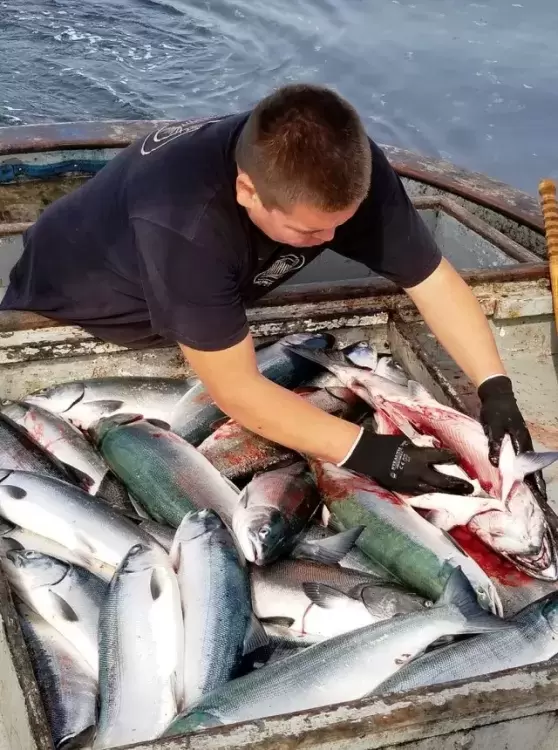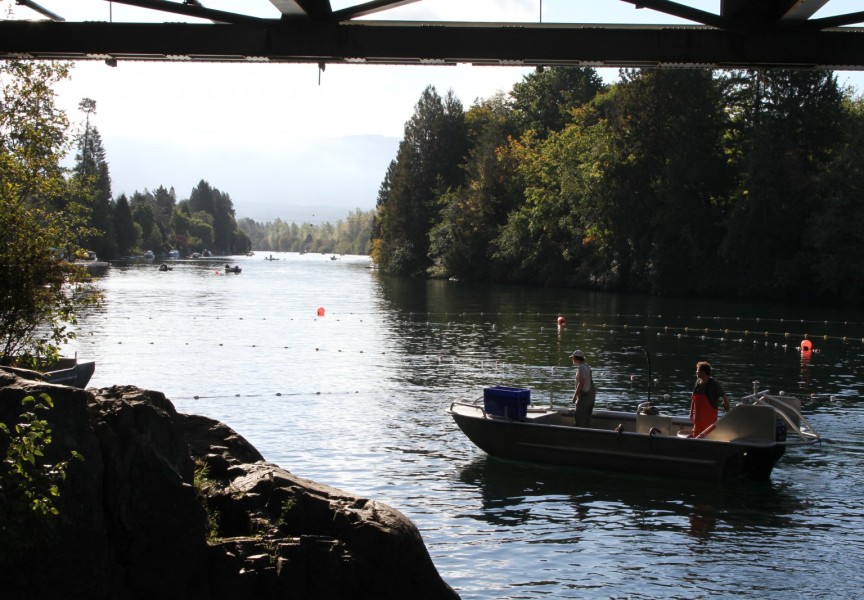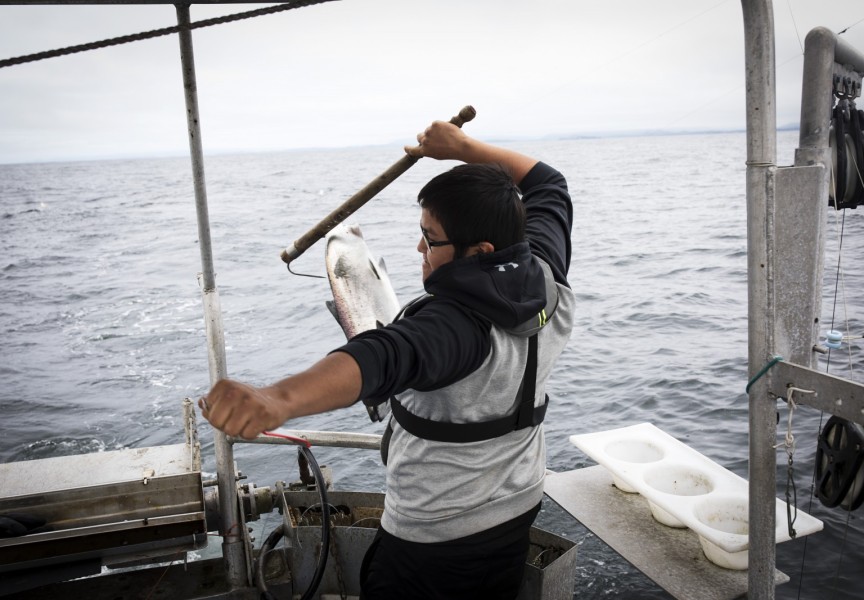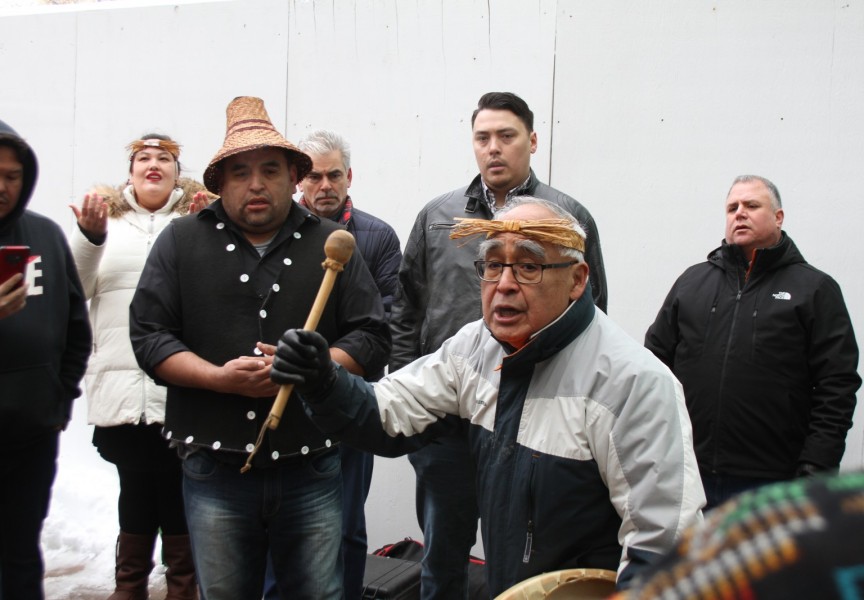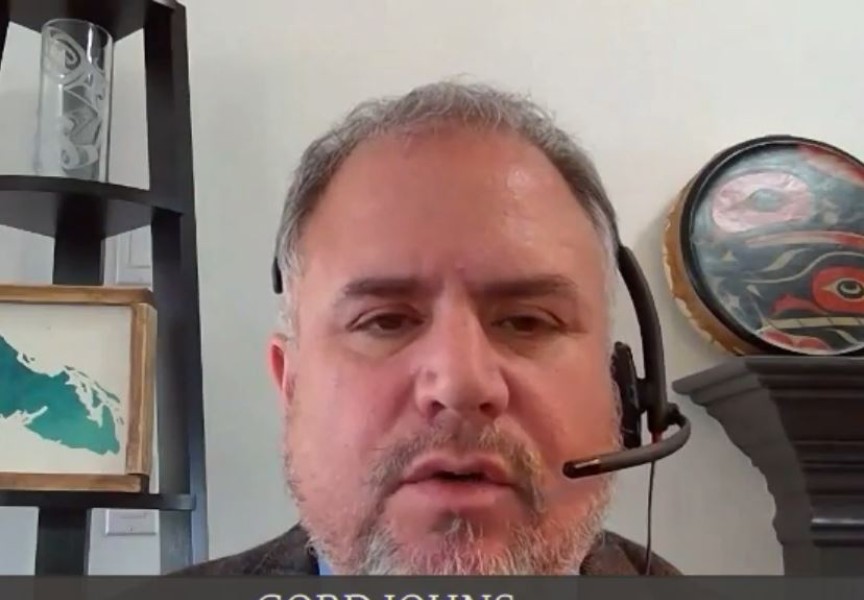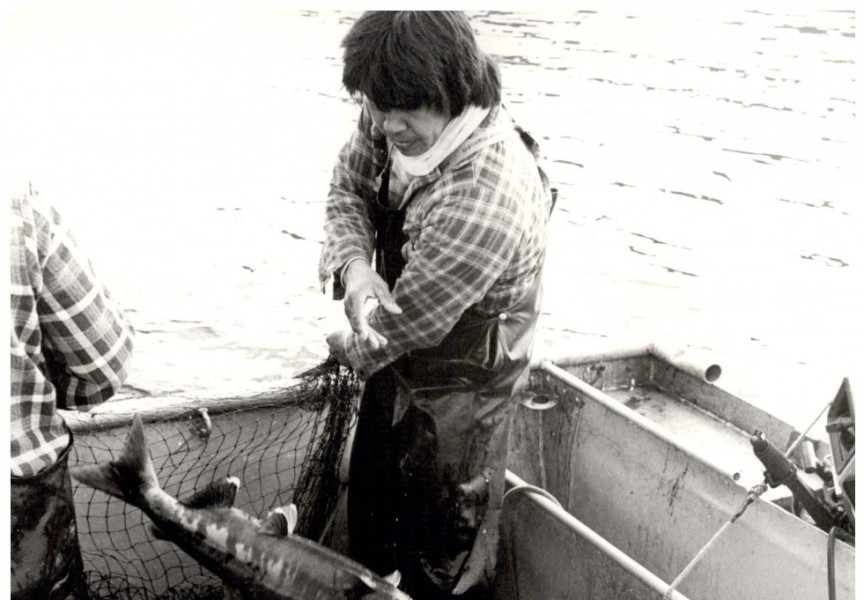Frustration continues among Vancouver Island’s First Nations, as rights to territorial resources conflict with how much Fisheries and Oceans Canada is prepared to allow for harvest.
This was the common theme observed by Uu-a-thluk fisheries biologist Jim Lane after attending meetings with DFO officials, Nuu-chah-nulth and other First Nations fisheries representatives in Nanaimo on Feb. 13 and 14. As the federal department prepares its allocations for 2019, Lane reported on these discussions at the Council of Ha’wiih Forum on Fisheries in Campbell River at the end of February.
“There’s a lot of frustration and anger toward DFO’s First Nations allocations and access policies,” said Lane at the forum on Feb. 27, which was hosted by the Ehattesaht/Chinehkint First Nation. “The common theme was that allocations are not adequate and do not meet the Supreme Court [of Canada] direction on First Nation’s access.”
With a ruling on the Justification Trial in April 2018, the B.C. Supreme Court determined that Canada had infringed on the Aboriginal rights of five Nuu-chah-nulth nations to harvest and sell species from their respective territories. This ruling followed a decision from the B.C. Supreme Court in 2009 that identified the nations’ priority to the west coast resources. The DFO has acknowledged other court rulings that determined Aboriginal rights to fisheries above other recreational and commercial groups.
“In the 1990 Sparrow decision, the Supreme Court of Canada found that where an Aboriginal group has an Aboriginal right to fish for food, social and ceremonial purposes, it takes priority, after conservation, over other uses of the resource,” stated the 2018/2019 Salmon Integrated Fisheries Management Plan for Southern B.C.
On the west coast of Vancouver Island, the recreation sector accesses the lion’s share of salmon allocations. Of the 88,300 total allowable catch of chinook for this region, the sports fishery accounted for 50,000, or 57 per cent of the west coast quota. Meanwhile First Nations’ food, social and ceremonial was granted 5,000, nations in the Maa-nulth treaty were allotted 3,447, T’aaq-wiihak economic fisheries got 8,095 and the commercial fishery was allocated 21,758 chinook.
Any significant changes hinge on the DFO’s ongoing review of its Salmon Allocation Policy, which came into effect in 1999.
“They can’t change any of the allocation policy at this time,” said Lane.
On the second day of the fisheries forum Sara Murdoch, the DFO’s regional director for policy and economic analysis, reported that revisions to the allocation policy will be guided by last April’s court judgement.
“A big trigger for this was the April 2018 court decision,” she said. “We are here today asking yourselves as the Ha’wiih how we best and most respectfully get your guidance and direction how to involve yourselves and your staff in this process as we undertake it.”
But issues remain with the fact that the federal department is exercising authority over waters that Nuu-chah-nulth nations managed for thousands of years before Europeans settled on the West Coast. A draft of the DFO’s Initial Fishery Management Plan that was distributed in late 2018 sets limits on the use of commercial troll gear used by T’aaq-wiihak fishers.
“For reasons of conservation, sustainability and to provide wide community participation, trip limits or other harvest limitations may be required,” stated the document.
The management plan also requires First Nations trollers to hire an independent monitoring company to track catch numbers, as well as the use of a DFO-approved vessel monitoring system that reports a boat’s geographic location every 15 minutes to the Vessel Monitoring Centre in Newfoundland.
Lyle Billy of the Ehattesaht/Chinehkint First Nation sees a problem in who holds the authority over West Coast fisheries.
“This has always been a real sore point for First Nations across B.C.,” he said during the fisheries forum. “They should be asking our chiefs, ‘How much do you need this year?’ And it should be made to happen.”
“Every year we ask for about 20,000-30,000 sockeye because that’s barely getting us by, and they allocate us 4[000],” said Hesquiaht Chief Councillor Richard Lucas.
“One of the biggest problems is that we’re always asking to get home use,” added Nuchatlaht Councillor Archie Little.
On March 1 the provincial government highlighted the value of tourism to B.C.’s economy, after over 6 million international visitors came to the province last year – a 6.4 per cent increase from 2017.
“These statistics show that B.C.’s tourism industry added the largest value to the provincial economy between 2007 and 2017, relative to primary resource industries, such as oil and gas, mining, forestry and logging, and fishing,” read a release from the Ministry of Tourism, Arts and Culture.
The economic value of tourism has not been lost on how the DFO manages West Coast fisheries, according to its most recent Salmon Integrated Fisheries Management Plan.
“Based on the most recent Survey of Recreational Fishing in Canada (2010), tidal water recreational fishing led to over $689 million dollars in expenditures and major purchases in British Columbia,” stated the department’s 2018/2019 plan. “Fishing opportunities in B.C.’s tidal waters draw Canadian and international tourists to the province: of 47,269 non-resident anglers surveyed in 2010, 40 per cent reported that they would not have come to British Columbia at all if there had been no opportunities for tidal water angling.”
While Murdoch emphasized the need for the DFO to seek guidance from Nuu-chah-nulth leaders, the future Salmon Allocation Policy will also be informed by other user groups.
“We will be engaging commercial and recreational fishing representatives,” she said. “It impacts their fishing as well and their livelihoods.”
The government’s review of the Salmon Allocation Policy is expected to continue over the next two years.

